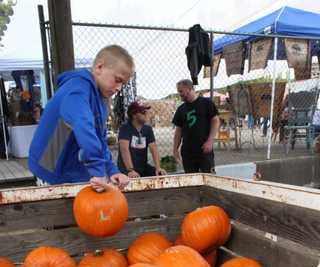Recently, Governor Gavin Newsom and Lieutenant Governor Eleni Kounalakis announced a request for a Federal Fishery Disaster Declaration to support the salmon fishing industry as it faces a closure for the 2023 salmon season.
This action follows projections that indicate California’s Chinook salmon abundance is at historic lows.
Recognizing the importance of salmon to California’s commercial fisheries, Acting Governor Eleni Kounalakis, on behalf of Governor Newsom, submitted the request to U.S. Secretary of Commerce Gina Raimondo immediately after the Pacific Fishery Management Council recommended a full closure of California’s commercial and recreational ocean salmon season – a recommendation the National Marine Fisheries Service is expected to implement next month.
If approved, the Federal Fishery Disaster Declaration would begin the process of providing needed relief to fishing communities financially impacted by a closure.
“Countless families, coastal communities and tribal nations depend on salmon fishing – it’s more than an industry, it’s a way of life. That’s why we’re requesting expedited relief from the federal government,” said Governor Newsom.
“To California’s salmon fishing communities, we’re working to get you expedited relief,” added Lieutenant Governor Kounalakis. “The Federal Fishery Disaster Declaration we’re requesting is vital to supporting our coastal regions, and we look forward to getting families the help they need.”
Prolonged drought, severe wildfires, and associated impacts to spawning and rearing habitat, harmful algal blooms, and ocean forage shifts have combined to result in some of the lowest stock abundance forecasts on record for Sacramento River Fall Chinook and Klamath River Fall Chinook.
In large part, the low returns and abundance forecasts are due to difficult environmental factors faced by these salmon on their initial journey out to the ocean three years ago.
The low ocean abundance forecasts, coupled with low 2022 returns, led the Pacific Fishery Management Council (PFMC) to recommend full closure of California’s commercial and recreational ocean salmon fisheries.
Commercial fishing in southern Oregon is also projected to face closures through the end of 2023.
The Newsom Administration has made unprecedented investments in recent years to revitalize salmon populations and support the communities that rely on salmon fishing.
The California Department of Fish and Wildlife (CDFW) announced $22.5 million for 19 projects last month to support the restoration of critical habitat for salmon, climate resiliency, wildlife corridors and wetlands restoration. The funding is part of a new $200 million effort to support critical restoration statewide. The projects announced last month include:
Protecting Salmon: California awarded more than $8.2 million to eight projects in watersheds throughout the state to address drought impacts for salmon in rivers and streams important to their lifecycle. The largest project awarded will be led by the Yurok Tribe within the Oregon Gulch section of the Upper Trinity River where remnants of hydraulic mining have narrowed the river and lead to a loss of salmon rearing habitat. This project will reestablish the natural flow of the river as well as a functioning floodplain to greatly improve habitat for salmon across various life stages.
Addressing Climate Impacts: Approximately $6.6 million was awarded to seven new projects to address urgent degrading water and habitat conditions due to climate change impacts. These projects include a focus on winter-run Chinook, improving the diversity of hatchery winter-run, as well as juvenile salmon collection system evaluation for re-introducing this species in the McCloud River above the Shasta Dam.
Wildlife Corridor – Fish Passage: Wildlife corridors are essential to providing fish and wildlife room to roam, or in this case, swim. California awarded more than $6.5 million to three fish passage projects that will modify bridges and remove other barriers to fish passage in northern and central California.
Last summer, working with the Winnemem Wintu Tribe and federal partners, the California Department of Fish and Wildlife (CDFW) returned approximately 20,000 fertilized endangered winter-run Chinook salmon eggs to the McCloud River upstream of Shasta Reservoir for the first time since the construction of the Shasta Dam in the 1940s.
The largest river restoration project in American history begins this year to remove four hydroelectric dams on the Klamath River. A project 20 years in the making to restore the river for and with Native American Tribes, it received final approval in December 2022 and will open up over 300 miles of historical habitat to salmon and steelhead that has been blocked by the dams for almost 100 years.
More than $84 million was invested in the last several years to modernize hatcheries by replacing egg incubators and sorting machines, installing automated fish counters and water treatment systems, replacing aging vehicles in fish planting fleets and modernizing hauling trucks.





